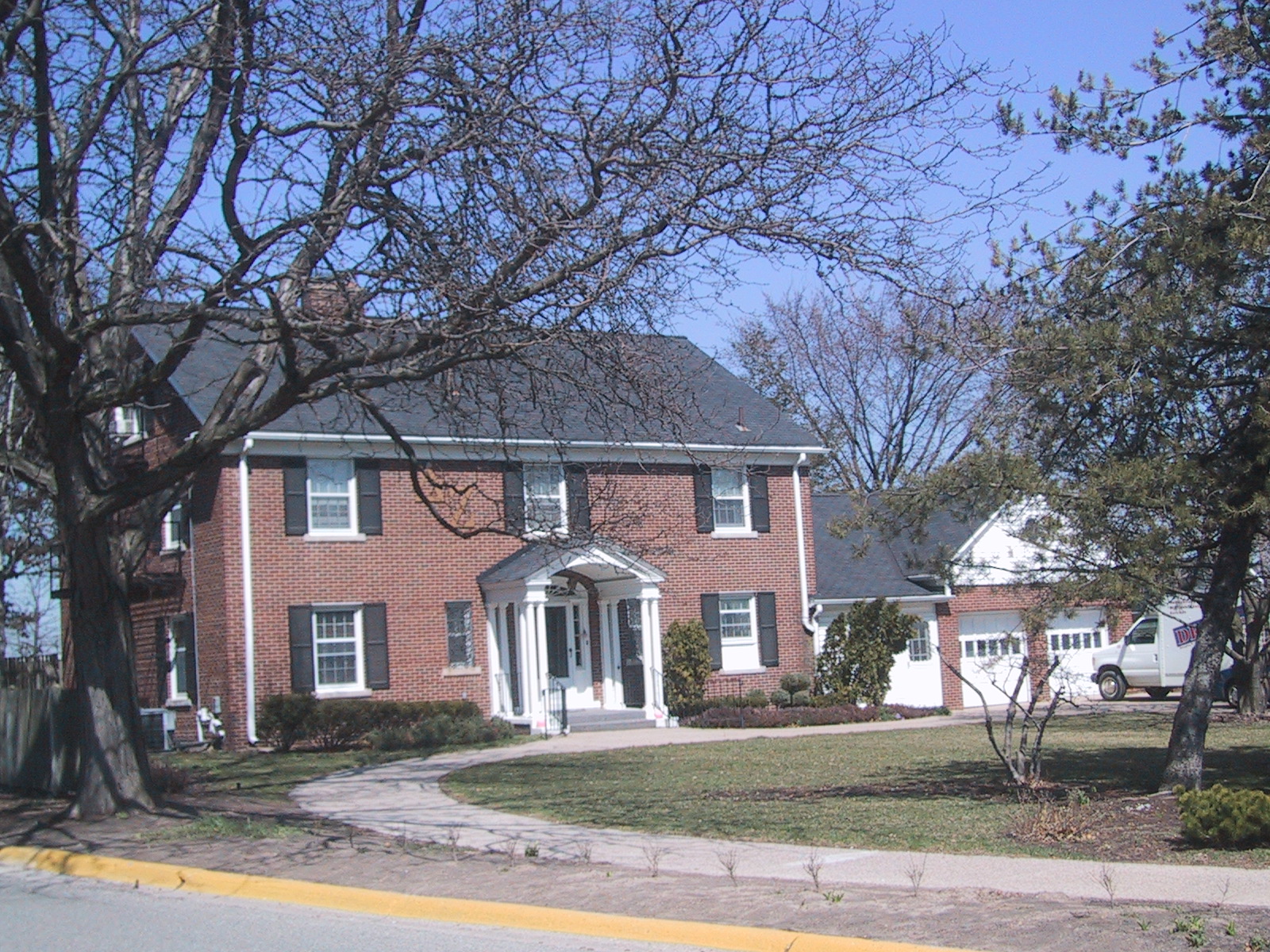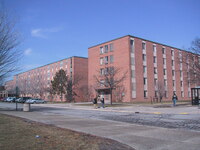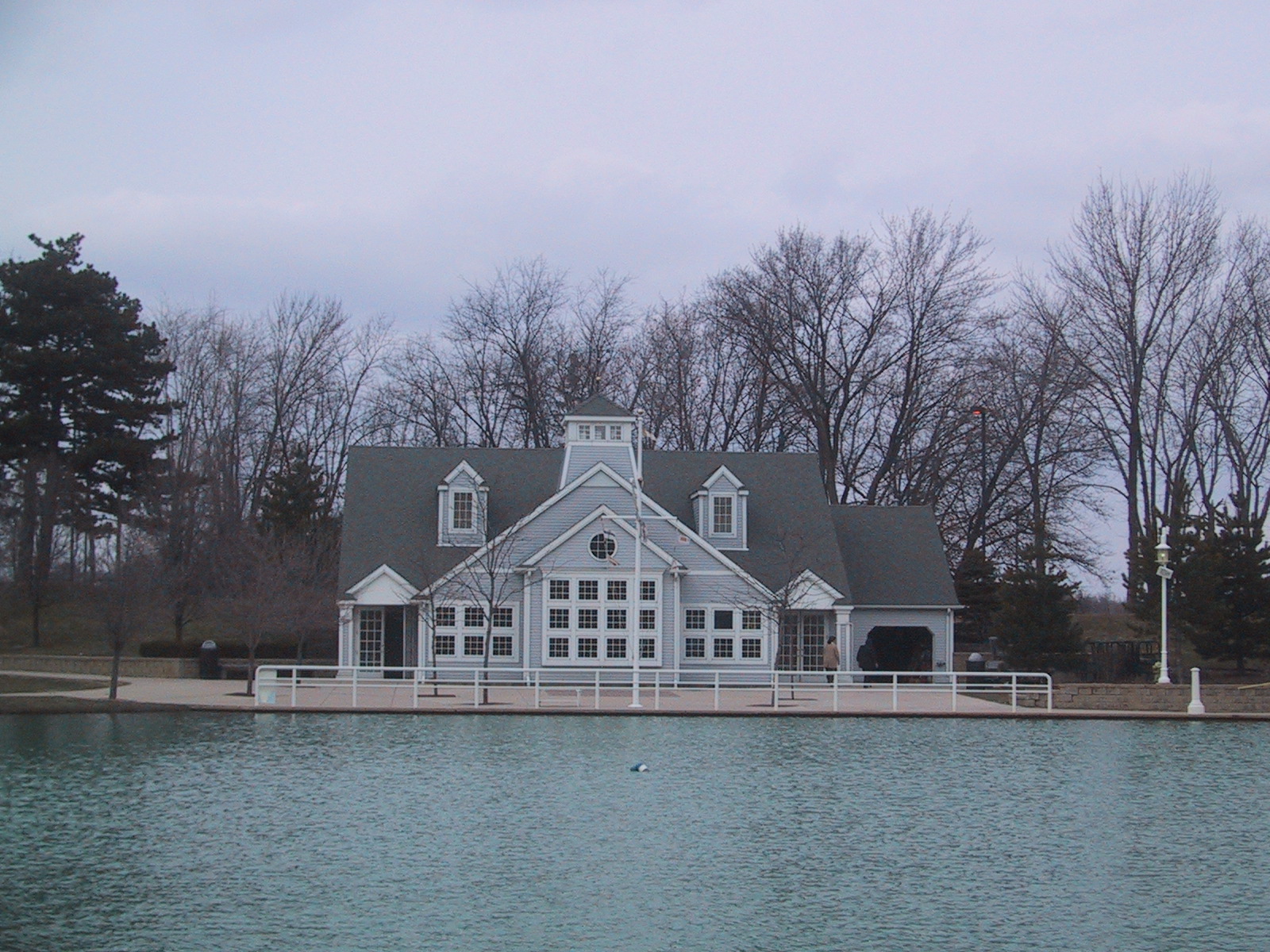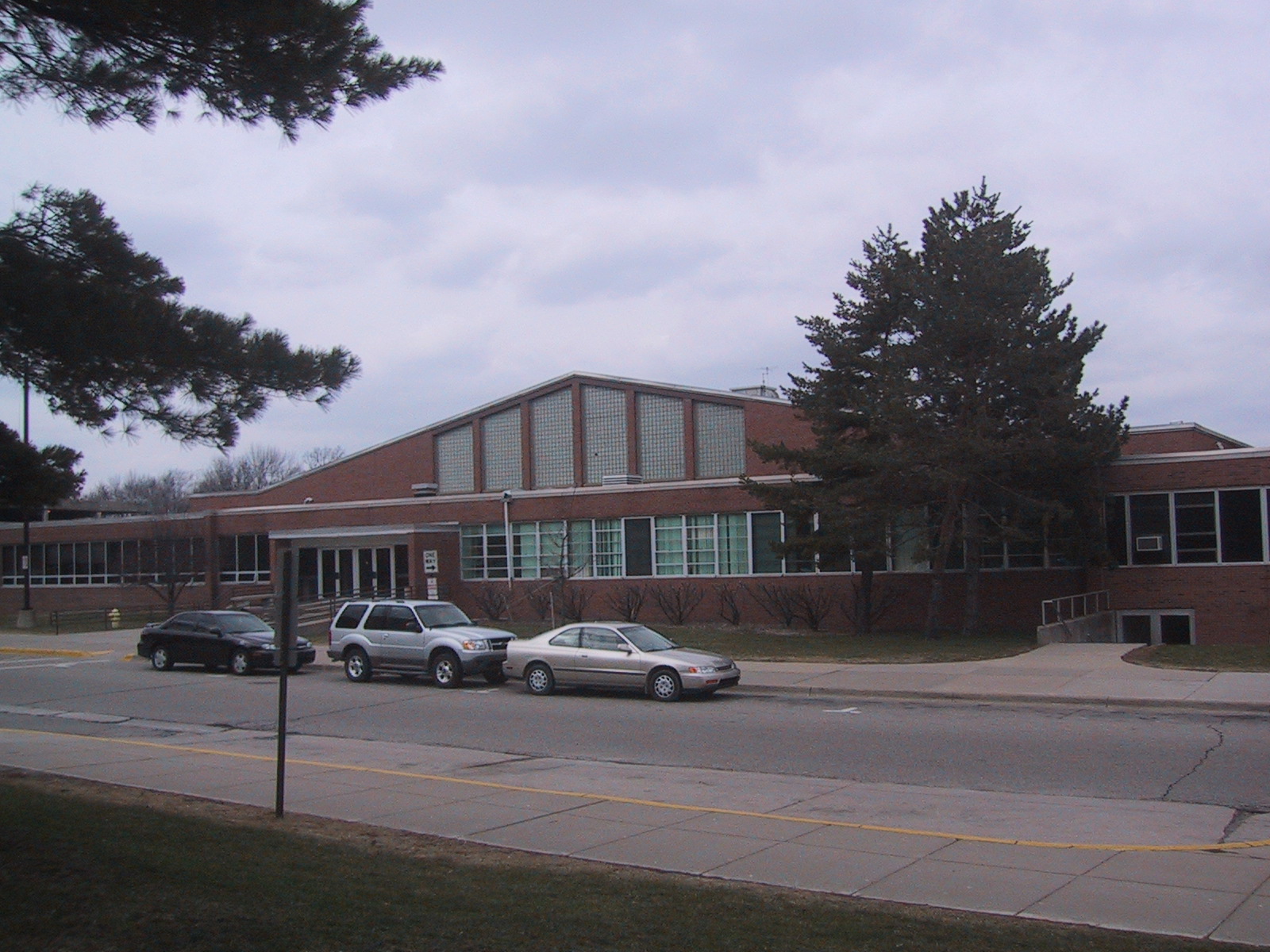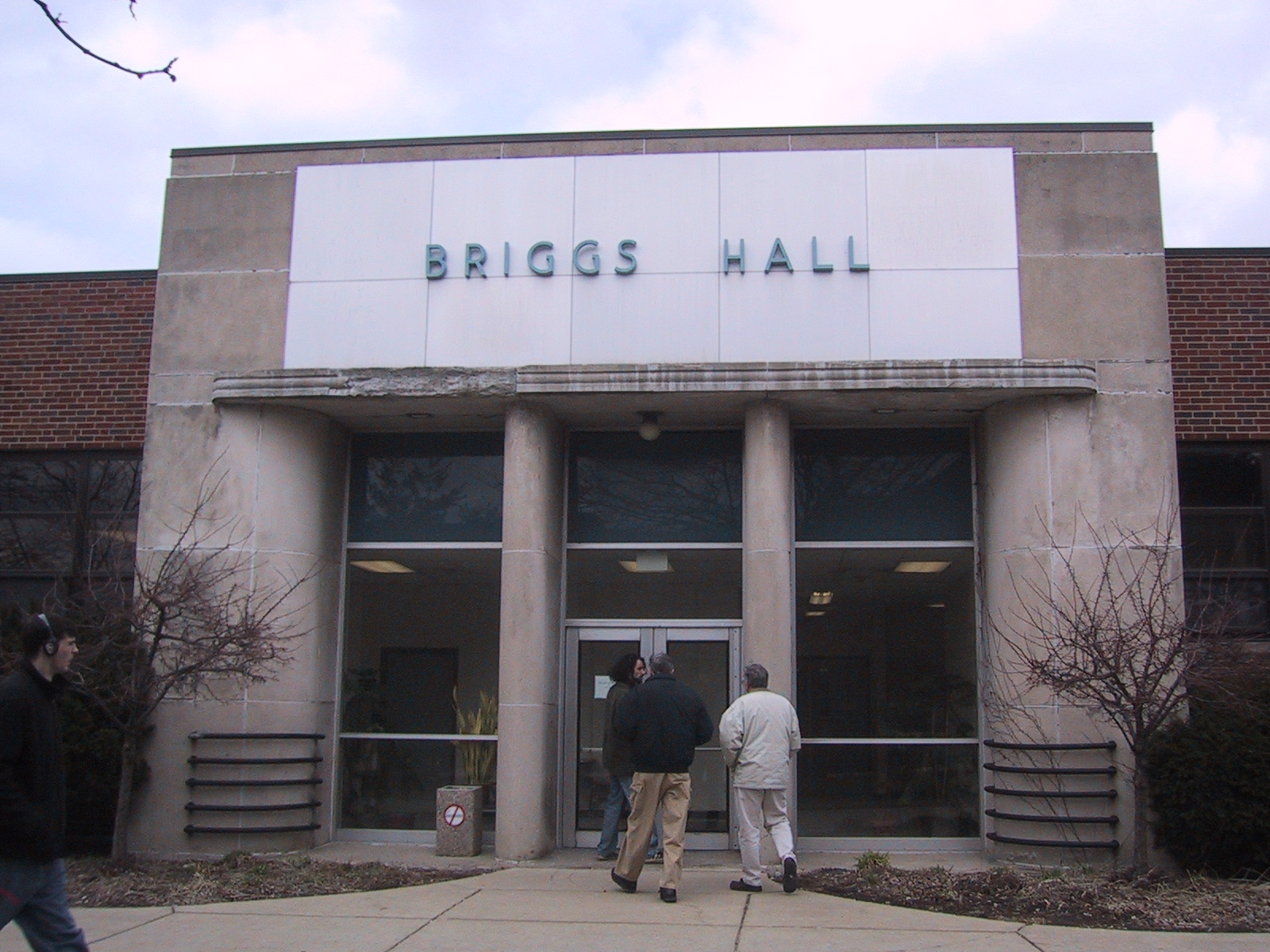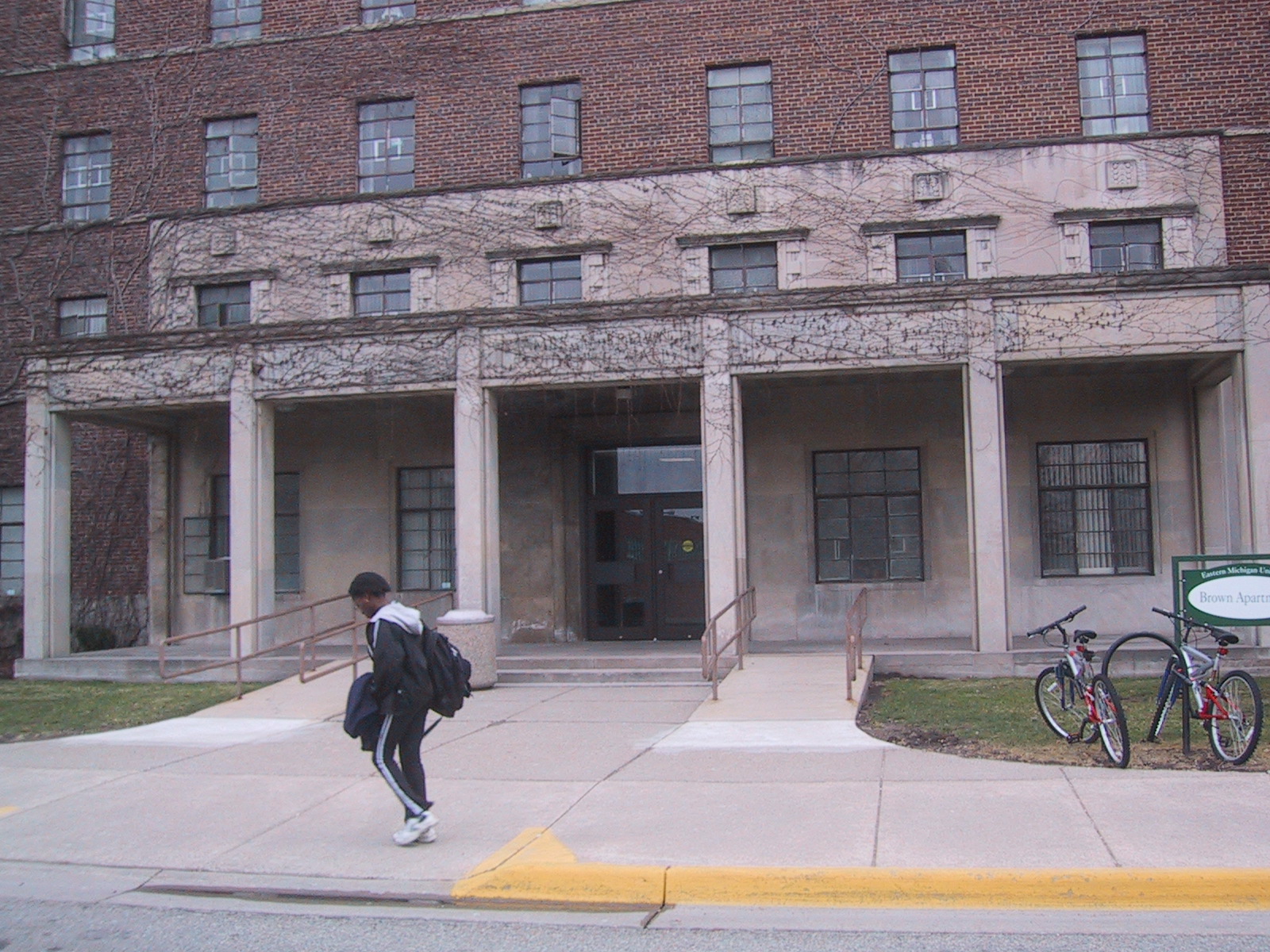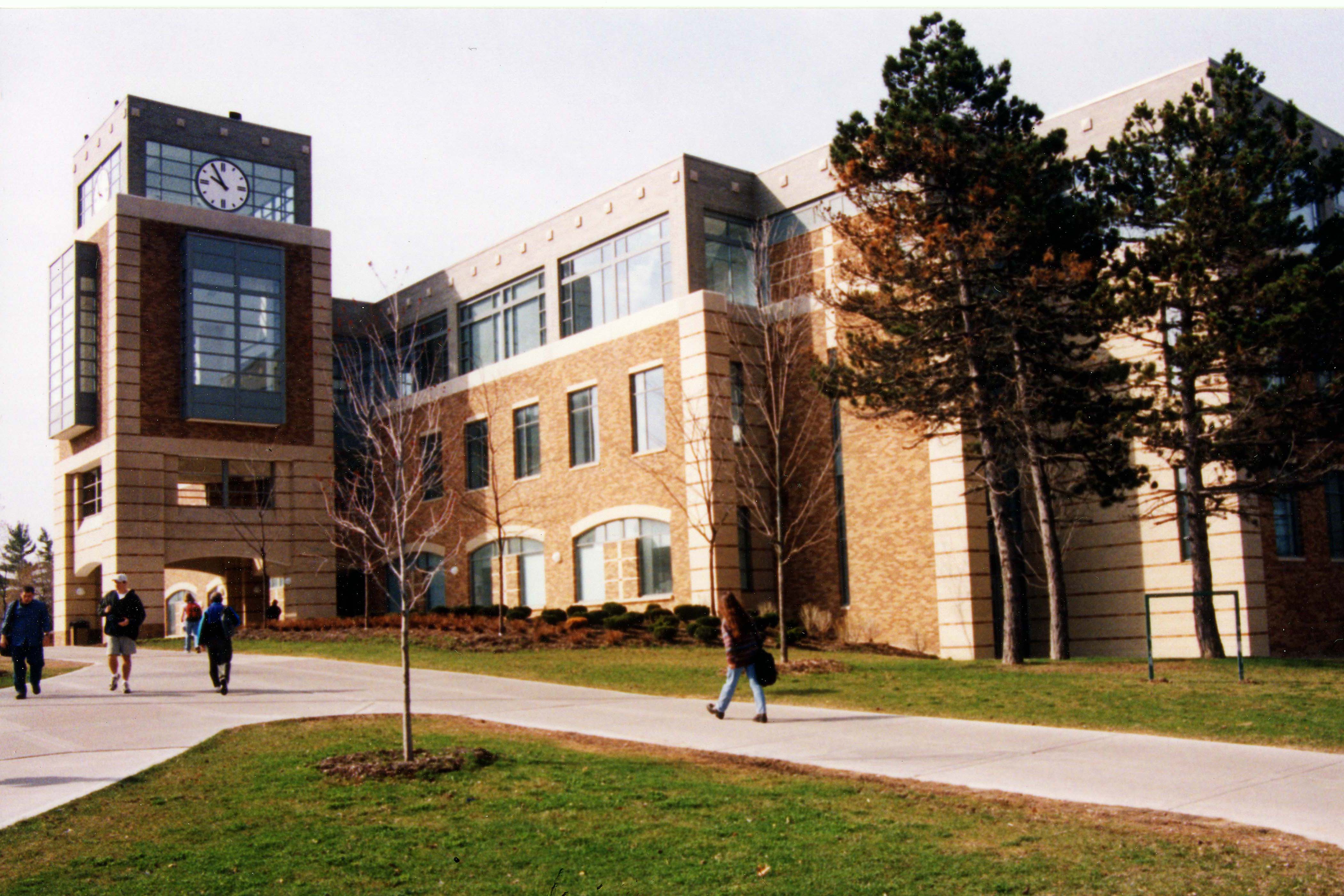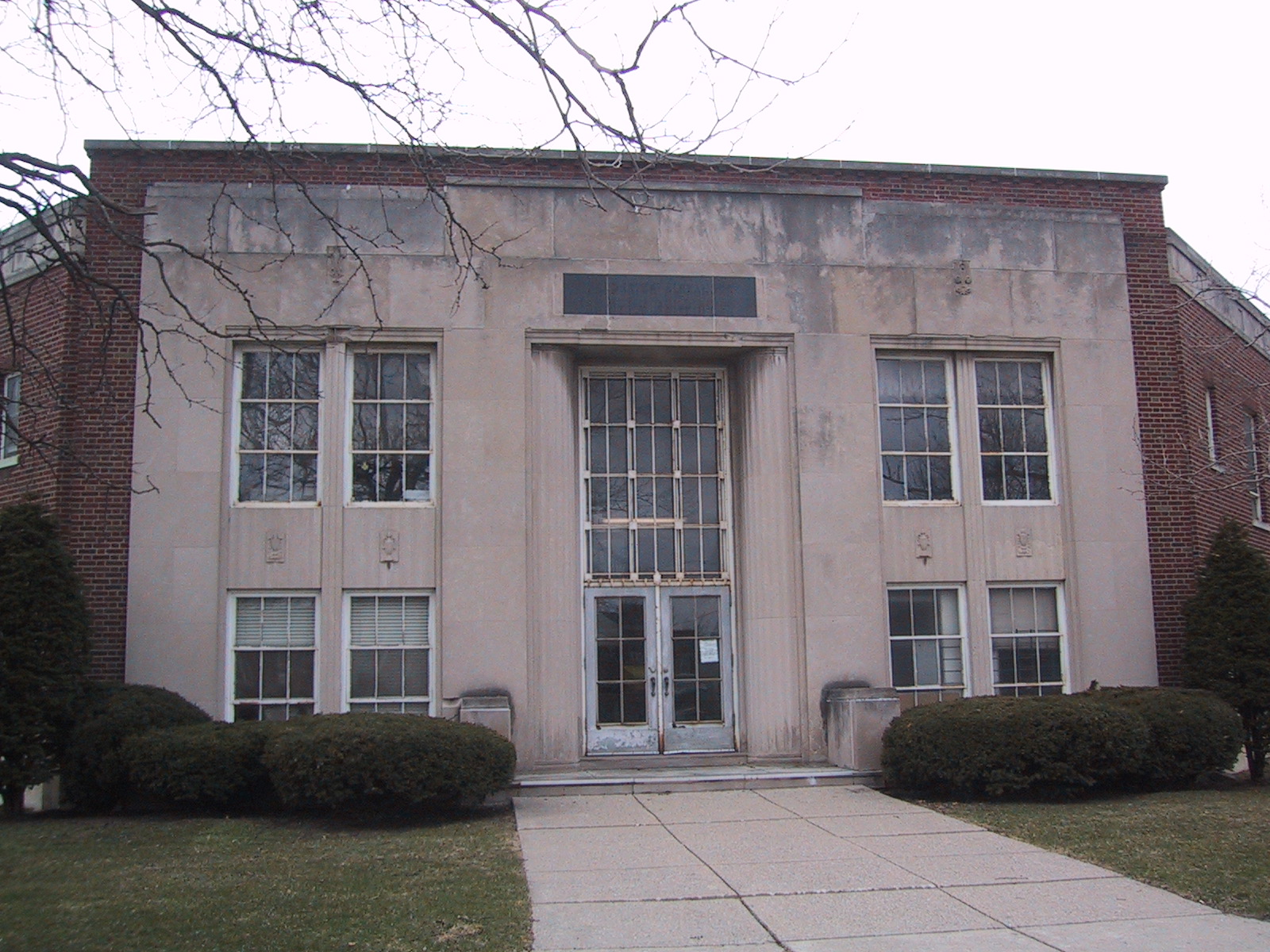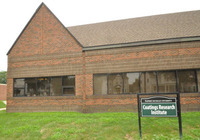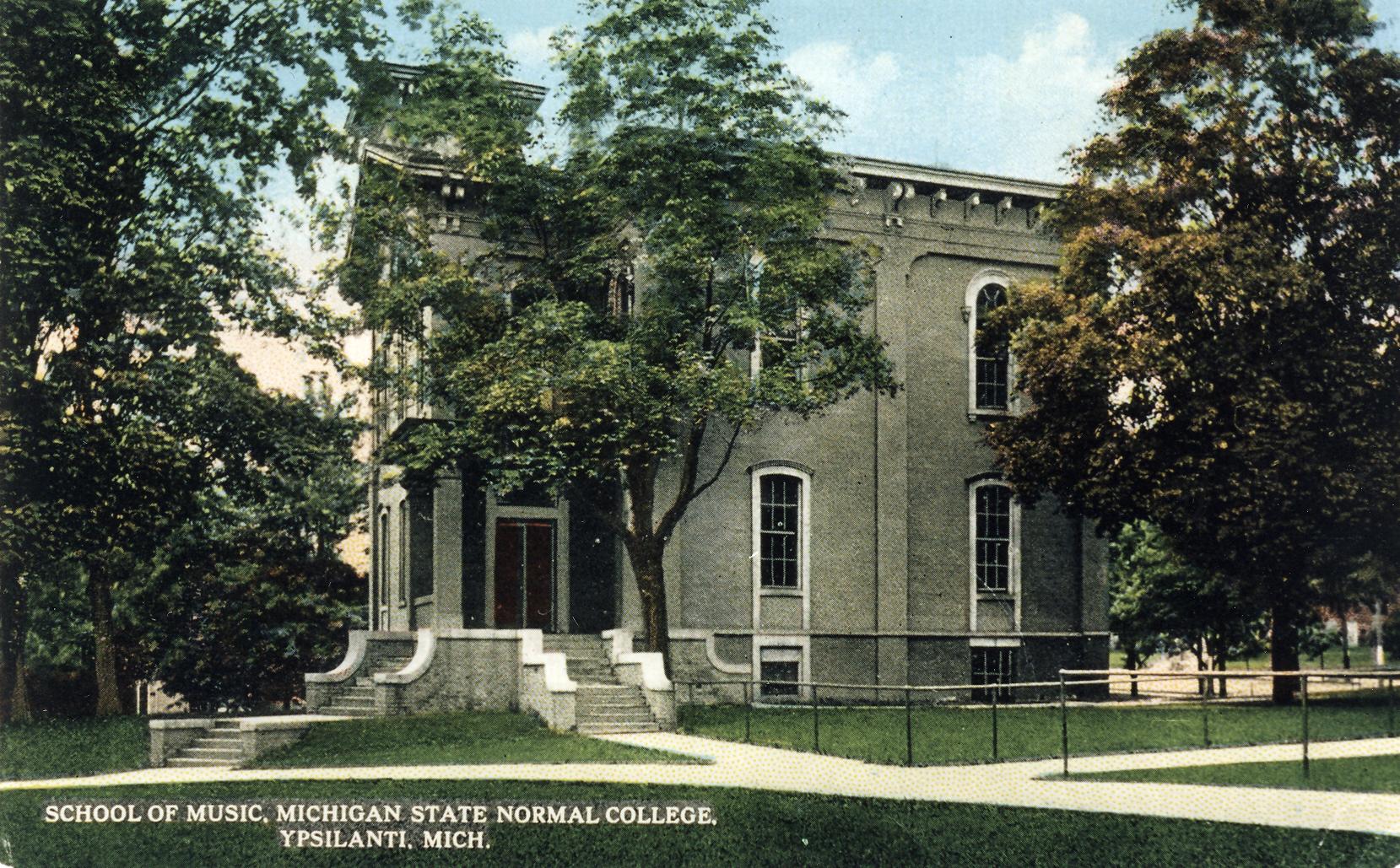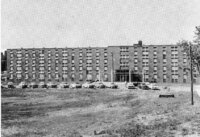Search
74 items
-
In 1948, seventy year old President John Munson was looking to retire. The State Board of Education asked the long-time president of Normal College to begin plans for the building of a new president's house for the campus. President Munson had boarded at the Huron Hotel throughout his presidency. His predecessor, President Charles McKenny, had lived in the Post Mansion, located where King Hall now stands. McKenny died in office leaving his widow without a home of her own except the president's house on campus. Munson allowed Mrs. McKenny to remain in the house until her passing in 1939. Following Mrs. McKenny's death, President Munson decided that the location of the Old Post Mansion, situated in the heart of campus, would be better used for residence halls. The Post Mansion was demolished and the residence halls of King and Goodison were built. The school board elected to build the new house on an old farm site adjacent to Jones Residence Hall. Prior to the completion of the new house, incoming university President Eugene Elliot and his family were unable to settle in Ypsilanti due to lack of housing. President Elliot lived in an apartment in the Business and Finance Building for a brief period of time while the new house was being completed. the new house was completed in 1949, and Mrs. Elliot had asked that a garden be cut in the backyard to provide flowers for university functions. The large house contained 4,850 square feet with an attached breeze-way and garage.
-
Construction was finished on the Alexander Music Building in 1980, and was named for Frederick M. Alexander who was the head of the Music Department from 1909-1941. The entire building was designed with the needs of the music department in mind, consisting of 86,000 sqft. with practice rooms, an organ recital room, and a large recital hall containing a stage and seating for 150 people. Unique features of the building include instrument repair rooms containing equipment to re-plate brass instruments. Special resilient caulking and sealant were used in place of a traditional mortar to ensure that sound would not be transmitted throughout the structure. Since solid walls tend to transmit sound vibrations like a tuning fork, solid walls were broken up, and practice and recital rooms were designed with non-parallel walls.
-
Eastern's enrollment grew rapidly in the post-World War II years, resulting in high demand for on-campus housing. After Goddard Residence Hall opened in 1955 construction began almost immediately on a new housing complex. This time, plans called for four buildings surrounding a central dining facility. When completed, the new complex would contain space for approximately 1,200 students in the geographical heart of campus. Best opened for student residence in the 1960s. The residence hall is named for Martha Best who was a professor of Biology and Bacteriology from 1924-1952.
-
The pond and Lake house were constructed as part of an 11-acre, $1.5 million project to create an outdoor recreation area connected to the Olds-Robb center. The man-made pond is six feet deep, and intended for year-round enjoyment. In the winter, the pond was designed to be used as an outdoor ice skating rink. The Lake house provides a place for students to relax. The outdoor complex, of which the pond and Lake house are a part, also includes volleyball courts, running trails, and a picnic area with horseshoe pits. The project also featured an 800-seat amphitheater. Based on student requests for a safe outdoor area for jogging at night, the designers lighted the one-mile long jogging trail.
-
Bowen was the second field house built on Eastern's campus. It was constructed in 1955 during a period of growth for the university. Briggs Fieldhouse was simply too small to accommodate the needs of the growing campus population. Bowen Fieldhouse was built as the first stage of a full-scale physical education facility. Later additions to the building would include a gymnasium, swimming pool, additional locker rooms and classrooms (See Warner Gymnasium and Olds-Robb Rec/IM). The 88,000 square foot building cost $1.25 million to construct. When Bowen was built, it was one of the largest facilities in the country including basketball, track, and baseball practice areas, also included facilities for outdoor activities like tennis and badminton. It also has indoor classrooms. There was permanent seating for 1,200 spectators and theoretically, additional seating capacity for 6,000. The building also included an 8-laps-to-the-mile track, a hard surfaced infield, a lounge, and a physical therapy room. Bowen Field House saw 351 wins in its 43 years as the home of Eastern's basketball team. Cheering and applause echoed from the steel beams of the building leading a radio announcer on WEMU to refer to the building as "The Old Barn" and the name stuck. Originally, the basketball court was located in front of the balcony and the baskets were at the east and west ends of the court. The floor later switched to north/south direction in 1960. "The Old Barn" still serves as an exercise facility for the EMU community.
-
President John Munson placed a gymnasium on his list of priority buildings for construction in the early 1930s. Munson found little support from the Michigan Legislature to fund such a project during the Depression. Munson turned to his personal friend and Ypsilanti native, Walter O. Briggs, Sr. for funding. Briggs, then owner of the Detroit Tigers, was deeply interested in physical education and willing to financially support the construction of the facility. The new field house, which opened in 1937, faced the back of McKenny Union at the heart of the social center of campus. Inside it contained lockers, showers, training rooms, and offices of officials. A large practice room with a dirt floor provided space for vaulting and other winter activities. It also acted as a gateway to Briggs Field which housed a 300 seat stand for football and another for baseball. Today, Mark Jefferson Hall, Strong Hall, and the parking lot cover the athletic park. With the need for additional classroom space on campus in the early to mid 1960s, Briggs Hall was repurposed, initially for the Mathematics Department and then for the Art Department. Athletics were moved out of the center of campus with the construction of Rynearson Stadium in 1969 and the baseball Stadium in 1971.
-
Brown Residence Hall, constructed in 1948, was named for James M. "Bingo" Brown, football and baseball coach 1923-1929 and first dean of men 1925-1962. The adjacent residence hall, Munson, contained 200 student rooms when it was built and Brown contained 250. Brown also had a kitchen and dining room attached. As of 2024, Brown and Munson have been demolished and are set to be turned into green space.
-
The Halle Library is the third library building on campus following R. Clyde Ford Hall, and what is now the Porter College of Education Building. The earliest library on campus was a single room in the administration building, known as Old Main. Ford Hall was built as the first library building in 1929 and Porter was built in 1966 - 1967 as a replacement. By the early 1990s, the library in Porter had become over-crowded, and strong student activism in 1992 provided the impetus to begin a drive to build a new and larger library. The new library, built on the site of the old physical plant, was designed and built to state-of-the-art specifications and cost $41 million to complete. The dedication program described the Halle Library as a library pointing to its close ties to modern information technology. The library is 270,000 square feet and contains close to a million volumes split between a browsing level and an automated retrieval system (ARC). The ARC was the second of its kind to be placed in a university library, but was part of a national trend towards condensed shelving and automatic access storage systems. Books that have not been checked out in the last five years are placed in the ARC. The carillon, donated by E. Gregg Liechty, has been brought into the 21st century through digitization. A computer produces the sounds of cast bells, but without the $1 million price tag and the stress of cold winters on fragile cast-iron bells. Instead, two keyboards, an auto bell console, and an organ console, are played and the songs saved on a sound card for later replay. Four speakers in the tower can send the sound 1.5 miles on a misty day. The library is not solely a computerized wonder; more traditional collections include the University Archives, the Map Library, a traditional periodicals collection, and a browsing collection on the third floor. Over the summer of 2024, the first floor of the Halle Library was renovated as a result of Eastern Michigan University receiving a generous gift from the Diane & Bruce Halle Foundation to upgrade and modernize the library. The goal of the renovation is to create spaces for the campus community to gather for collaboration and instruction. The renovation brought the University Archives down to the first floor, and provided office spaces for the Center for Jewish Studies and the Center for Social Justice. There is also a gallery space available for students and the community to showcase exhibitions.
-
Eastern's enrollment grew rapidly in the post-World War II years, resulting in high demand for more on campus housing. Goddard Residence Hall opened in 1955, and construction began almost immediately on a new housing complex. This time, plans called for four buildings surrounding a central dining facility. When completed, the new housing would contain space for approximately 1,200 students in the geographical heart of campus. Buell was constructed in in 1958. Buell and Downing could each house approximately 300 students. The building was named for Bertha Buell, who served the Normal College as a professor of History, English, and Political Science from 1899-1937. Currently, Buell is open for upperclassmen and transfer student residence.
-
From the mid-1930s through the early 1940s, President John M. Munson sponsored a wide variety of building projects on campus, including four dormitories, a new field house, and a new health building. Built at a cost of $60,000, the health center was intended to insure the good health of students. Glenadine Snow, who had worked at the college since 1915, took charge of the newly built college health center when it opened in 1939. The new health center featured ten patient beds, as well as offices and outpatient rooms. The first student to receive care was Irving Hooper, who suffered a dislocated shoulder. According to the student newspaper, some forty students sought medical attention at the new hospital in order to see the new facility and its features. One night, a student arrived out of breath, with a broken arm and without his trousers. The dedicated health center workers braced his arm, but did not offer him any clothing. This structure served as the Health Center (1939-1961) and then as the Music Building (1961-1984). From 1984-2003, the building housed payroll and other important financial services for the university.
-
The Coatings Research Institute (CRI) was founded in 1985, and performed contract as well as grant research by the resident faculty. In 1990, Eastern Michigan University obtained a National Science Foundation (NSF) grant to establish a new Industry/University Research Center (I/UCRC) in Coatings. The Surface Science Research Center was established in 1993. April 2000, EMU received its largest single gift ever - coatings patents from the ExxonMobil Chemical Company appraised at $16 million. The patents involve materials used to create industrial paints. "There are only a few undergraduate coatings programs in the country and we are proud and excited that ExxonMobil chose to donate these patents to our Coatings Research Institute," said President William E. Shelton at an April 17, 2000, press conference. The gift included 20 issued U.S. patents and five pending U.S. patent applications. It also included more than 50 worldwide patent and patent application counterparts. EMU's Dr. Frank Jones and students of Eastern Michigan assisted ExxonMobil with the development of five of the U.S. patents. "We are in the best position to do something with the patents because we know the technology," said Jones. "This will give EMU faculty and students an opportunity to be involved with exciting new area of coatings technology and to potentially produce income that will help the coatings program at EMU." The CRI is still used today to develop and expand on the science and technology of polymers and other materials.
-
The second building to be erected on campus was the Conservatory. Originally intended for the use of the State Agricultural Society, and was to contain an agricultural museum. Its erection began in 1864, but it was not roofed until late fall, 1865. It remained uncompleted until 1869, when the legislature appropriated funds for its completion. Then in January 1870, the Board of Education accepted the building and changed its name from the "Normal Museum" to "Normal New School Building." It was devoted to the use of the Training School until 1882 and then was occupied by the Conservatory of Music.
-
The Cooper Building was a 12,796 square foot office facility built in 1984. It was located immediately across the street from Westview Drive, with a view of Rynearson Stadium and EMU's athletic facilities. Originally known as Riverbend Office Building, EMU purchased the property in January. A lease agreement between EMU and The EMU Foundation was signed in 1996 stating that The Foundation offices will occupy approximately 5,648 square feet at an annual cost of $66,153. The Foundation made necessary improvements to the office space at their cost. Additionally, The Foundation was responsible for payment of utilities, custodial services and other related operating costs. When improvements to the office space were completed, the Foundation relocated the University's Give Records and Receipts operations there. The Cooper Building is no longer utilized by Eastern Michigan University.
-
In 1960, 90 units were built to serve as married housing. The one bedroom units originally rented for $67, and the two bedroom units rented for $77. The units were available beginning September 1, 1960. The second phase of Cornell Court Apartments began in 1966; expanding the capacity of married housing. Cornell Courts still offers one and two bedroom units, now available for all upperclassmen over the age of 20 regardless of marital status.
-
In 1986, the EMU Board of Regents authorized plans to construct Huron Golf Club and entered a 99-year grounds lease with Ypsilanti Township for 136-acres adjacent to Ford Lake at $1 per year. In 1989, the Huron Golf Club, designed by golf course architect Karl Litten, opened along with the Radisson Hotel and Corporate Education Center. The name changed to Eagle Crest Golf Club in 1991. The golf clubhouse was named the Eastern Michigan University Roy E. Wilbanks Eagle Crest Golf Resort Golf club in 2013. In addition, the Marriott named the ballroom the Roy E. Wilbanks Ballroom that same year. Due to a 2020 donation from GameAbove, EMU is working to construct a performance center for the EMU golf teams. In 2019, EMU sold the the Corporate Education Center at Eagle Crest to MFS Ypsilanti Holdings, Inc, which operates the Marriott Hotel adjacent to the center. University administration cited changes in corporate education instruction delivery as the reason for the sale. This sale did not change EMU's partnership regarding the Eagle Crest Golf Resort.
-
Part of the four-building complex of Downing, Best, Buell and Wise Halls; surrounding the dining commons. Originally Downing Residence Hall, constructed in 1957, was an all-female dormitory. Today, the residence hall accommodates male and female students which are divided into same-gender suites.

